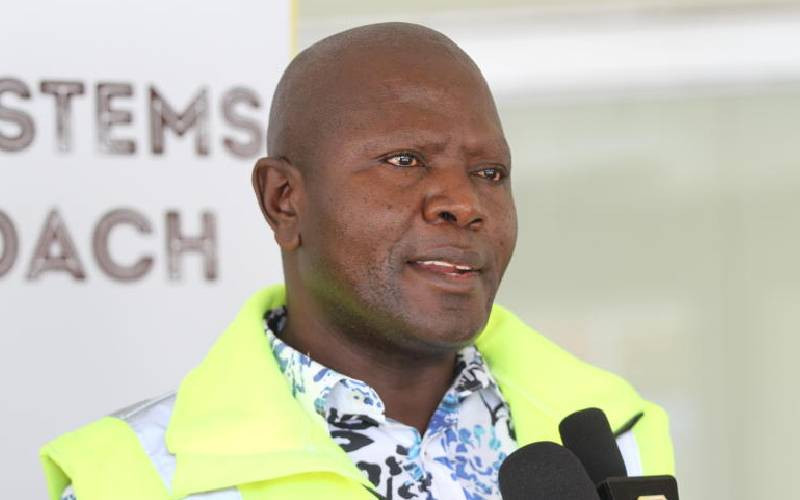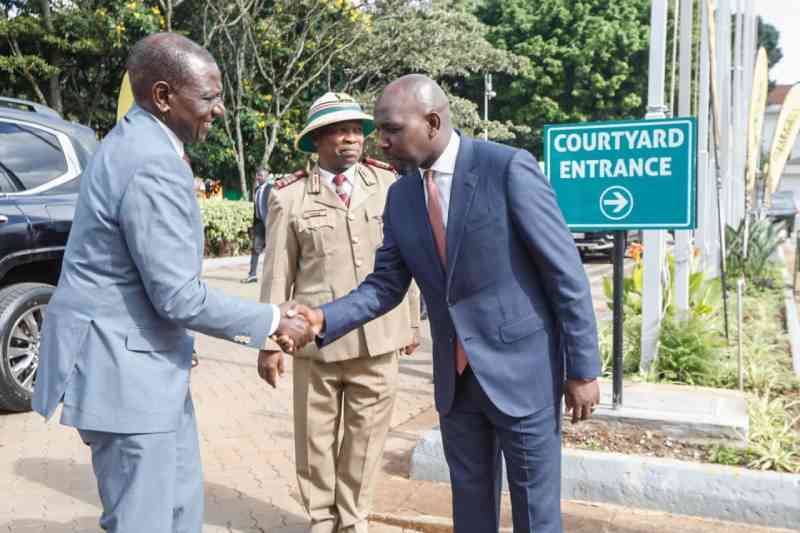I recently made a road trip to Kigali, Rwanda's capital city, through Kampala, Uganda. I can now confirm what I have read and heard from friends and family who have been to Kigali. The city is well planned and their road network very good.
From Katuna, a border town between Rwanda and Uganda, I didn't spot a single traffic police officer.
The traffic cops were at specific junctions in Kigali. Traffic flowed smoothly, no jams as is typical of Nairobi and other major towns in Kenya. Road users were disciplined and overtaking was done when absolutely necessary.
Katuna is 74km from Kigali. There are no bumps on the entire stretch and they are to be found sparingly in the estates. Their boda boda operators and passengers wear helmets and, just like motorists, observe traffic rules. And it is strictly one passenger per motorbike.
The police at the border post were clear enough: "Welcome to Rwanda. Keep right. Our speed limit is 60km per hour on the highway and 40kph within trading centres." The signage from Katuna to Kigali is clearly visible and the road is lined with streetlights.
Whoever designed the speed limit must have had tourism in mind. While driving at that moderate speed, one gets to see the length and breadth that is Rwanda, often called the city of a thousand hills. The cleanliness makes Kigali a sight to behold.
National budget
Our national budget could be three times that of Rwanda, but their investment in road and air infrastructure, their health system and conducive business environment make Kigali an investment destination of choice.
The Nakumatt Supermarket chain has three branches there while it has closed shop in Kenya. I enquired around and was told they pay their suppliers promptly.
Rwanda has done her homework and is attracting investors from Africa and beyond. Our Brand Kenya team has some explaining to do - Rwanda chose to spend £30 million printing the words 'Visit Rwanda' on the sleeves of Arsenal’s football shirts.
Let's have CCTV cameras installed on the stretch of road from Mombasa to Nairobi through to Malaba. Another route is that from Nairobi to Kisumu ending in Busia.
The cameras should be linked to the command centre set up by Safaricom some years back. It would also be useful to post five traffic police officers in every town to monitor motorists.
The Government could also consider extending the Standard Gauge Railway from Kisumu to Busia or to Malaba, through Eldoret or Webuye depending on technical advice from the contractor.
Once road signage is done, all motorists should have their logbooks and driving licences in their vehicles. Traffic officers would retain the logbook in case a motorist violates the Highway Code.
Banking slip
Stay informed. Subscribe to our newsletter
The logbook should only be released to the owners upon production of a banking slip showing that one has paid the fine for the traffic offence or has been processed through the courts and has paid a cash bail or the requisite fine.
This is working in Kigali; there is no reason why it shouldn't work in Kenya. In addition, the speed limit for the Mombasa-Nairobi route should be 100kph, and 50kph in trading centres.
The National Transport and Safety Authority, Kenya Police (Traffic Department) and Kenya National Highways Authority should visit Kigali for benchmarking. Should this plan come to pass, we will avoid unnecessary deaths on our roads, such as happened recently in the Kimende road accident that claimed at least 14 lives.
As soon as these agencies complete their work, county governors should embark on the concept of spatial planning.
This refers to system approaches used by the public and private sectors to influence the distribution of people and activities in spaces of various scales. Spatial planning can be defined as the co-ordination of practices and policies affecting spatial organisation.
Spatial planning is synonymous with practices in the United States but on larger scales. The term is often used in reference to planning in European countries.
Every county should have a unique code. For example, Uasin Gishu could be denoted as ELD 428 block 12. In Kigali, I lived in KG 428 block 12.
This way, emergency response teams, Kenya Revenue Authority, Kenya Power and other State agencies would be able to run their services smoothly.
Mr Koros is a public relations practitioner based in Eldoret; [email protected]
 The Standard Group Plc is a
multi-media organization with investments in media platforms spanning newspaper
print operations, television, radio broadcasting, digital and online services. The
Standard Group is recognized as a leading multi-media house in Kenya with a key
influence in matters of national and international interest.
The Standard Group Plc is a
multi-media organization with investments in media platforms spanning newspaper
print operations, television, radio broadcasting, digital and online services. The
Standard Group is recognized as a leading multi-media house in Kenya with a key
influence in matters of national and international interest.
 The Standard Group Plc is a
multi-media organization with investments in media platforms spanning newspaper
print operations, television, radio broadcasting, digital and online services. The
Standard Group is recognized as a leading multi-media house in Kenya with a key
influence in matters of national and international interest.
The Standard Group Plc is a
multi-media organization with investments in media platforms spanning newspaper
print operations, television, radio broadcasting, digital and online services. The
Standard Group is recognized as a leading multi-media house in Kenya with a key
influence in matters of national and international interest.









